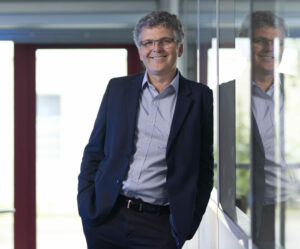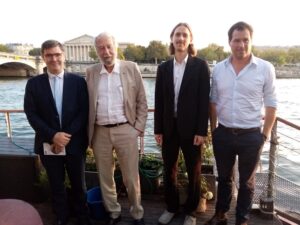Aurélien Bigo, Chaire Énergie et Prospérité: the impact of vehicle electrification – April 2023
Aurélien Bigo, Chaire Énergie et Prospérité: the impact of vehicle electrification – April 2023
On 18 April 2023, opening the first session of its series on the impact of vehicle electrification, Futura-Mobility met with Aurélien Bigo, independent research associate on the energy transition of transport, attached to the French Energy & Prosperity Chair. His presentation analysed the role of electrification in the energy transition of transport in France.
FM: How has travel in France changed since the industrial revolution?
AB: If we look at the three criteria – transport demand, number of journeys, time spent in transport – in a fairly schematic way, the latter two remained relatively stable in France between 1800 and 2017. On average, we see there are between 3 to 4 trips per person per day and each trip lasts 15 to 20 minutes. Moreover, this latter figure remains the same whatever the mode of transport, whether walking, cycling, public transport, or driving.
In contrast, what has skyrocketed over the years is the number of kilometres travelled, what we call ‘transport demand’. There has been a major shift from walking to driving since the 1950s. There is a factor of 10 between the speed of the car and that of walking. This acceleration in the average speed of travel has driven average travel distances up by a factor of 10 to 12. This has enabled greater accessibility and travelling further.
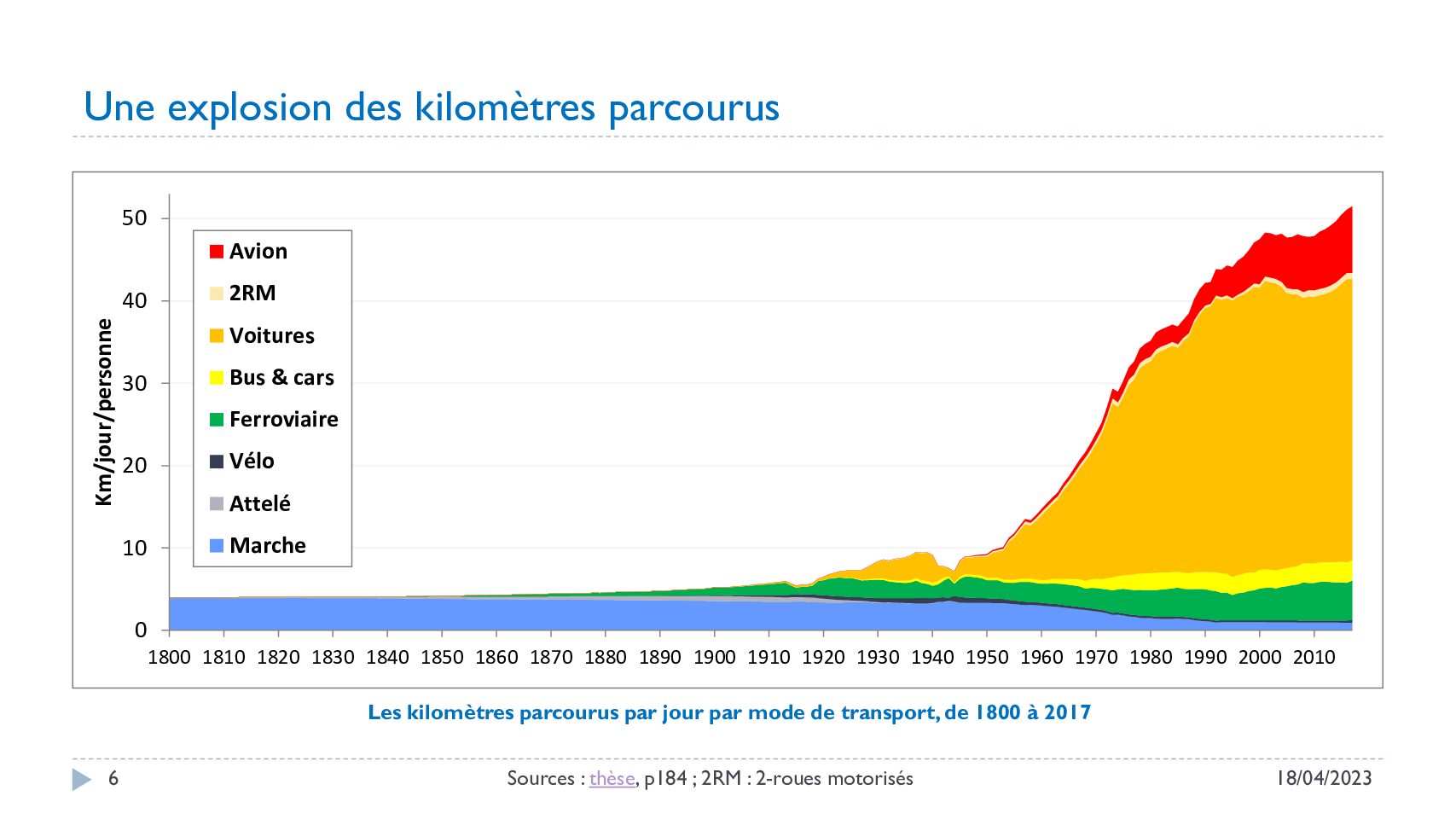
FM: Where does France stand in terms of decarbonising transport?
AB: The increase in kilometres travelled led to a sharp rise in CO2 emissions from transport within France until the early 2000s, followed by stability in the 2010s. Then in 2020 we saw quite a steep drop due to Covid, followed by a rebound, even though we have yet to reach the 2019 level, which was quite high.
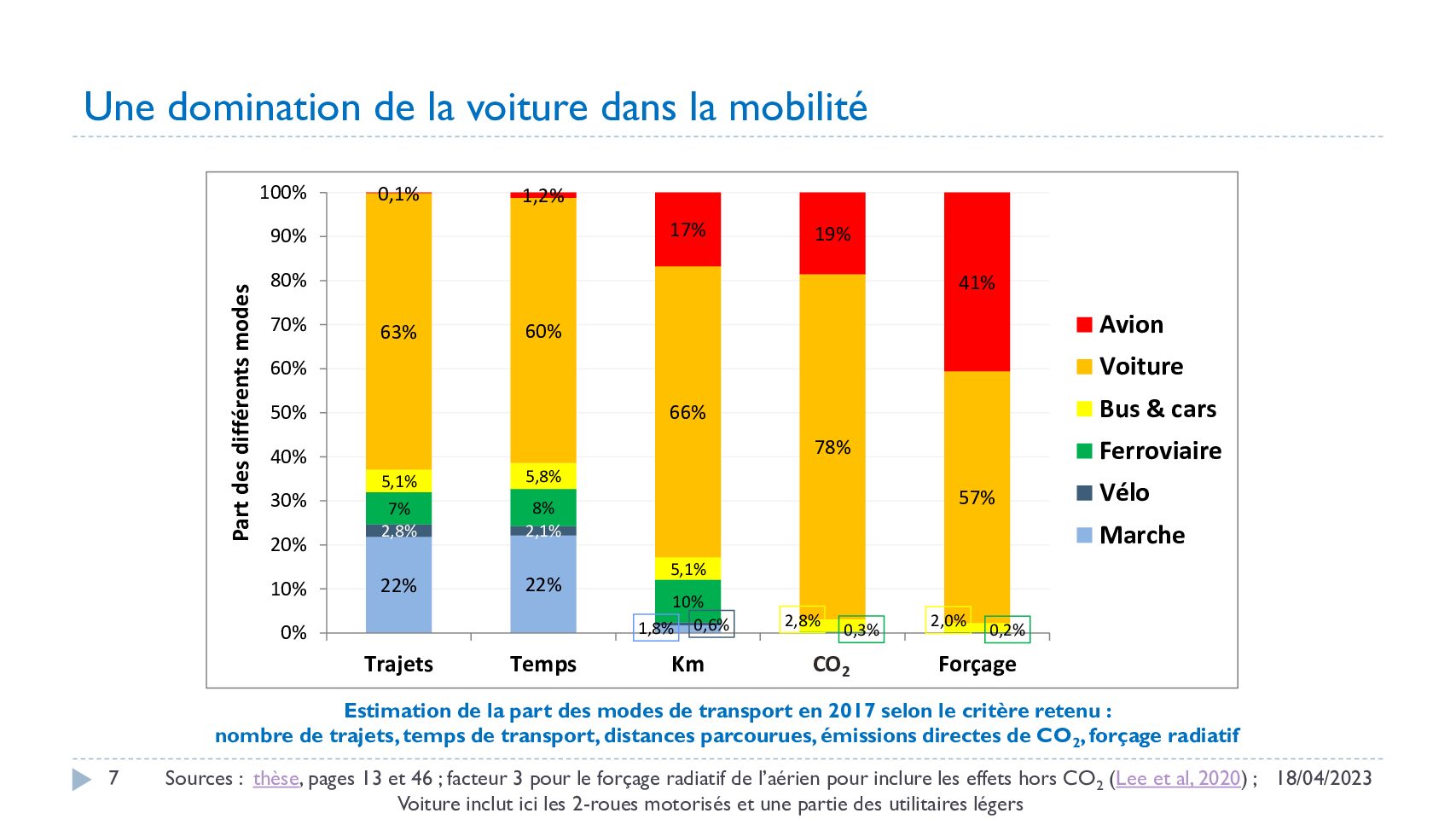
The goal to achieve zero direct emissions for land transport in France by 2050 means total decarbonisation, from cars to heavy goods vehicles, including light commercial vehicles, coaches, buses, river transport, etc… so not a single drop of fossil fuel.
Reaching this goal represents a significant challenge given the inertia in the transport system: both for land use planning – which is highly structuring – and vehicle fleets – which take a certain amount of time to renew – and mobility practices. There is also a certain amount of inertia in public policies, especially facing this disruption that must happen in the short term and calls for really bold public policies. We have fallen far behind on these climate objectives!
Other impacts of mobility need to be taken into account at the environmental level on air pollution, resource depletion, and the occupation of public space; at the social level with territorial inequalities, social vulnerabilities, and accessibility to transport; and at the health level with regards the impacts of transport noise and inactivity on health. Note that 2/3 of the health or social impacts of noise are due to transport! Moreover, 95% of the French population is either too sedentary and/or too inactive. Nor should we forget the challenges of accident rates, which haven’t fallen for the past ten years or so, despite good progress previously.
FM: What are the levers for decarbonising transport?
AB: There are five levers for decarbonising transport: transport demand, modal shift, vehicle occupancy, vehicle energy consumption, and the carbon intensity of the energy source used. Electrification functions both as a lever for both the carbon intensity and energy efficiency of vehicles.
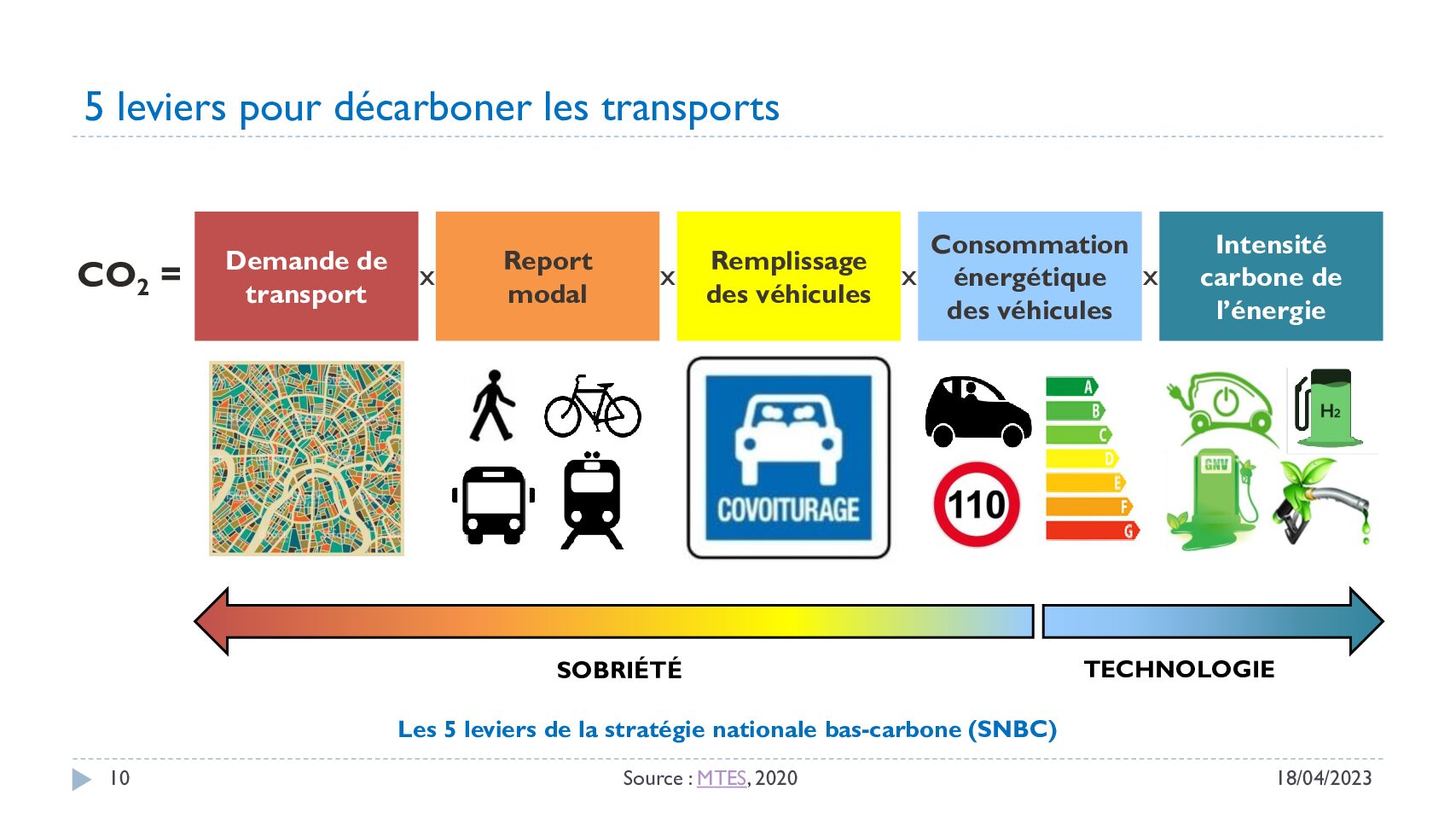
When we analyse the past, transport demand is the major factor in the development of CO2 emissions in transport in France. The four other levers have mainly offset each other.
On average per kilometre travelled, CO2 emissions have fallen slightly over the last few decades, by 12%. Modal shift and vehicle occupancy have tended to work the wrong way round – so there has been a modal shift towards the car and a kind of ‘de-carpooling’. On the other hand, the energy consumption of vehicles has decreased, mainly due to advances in combustion engines, while electrification has yet to make a real impact given the small size of the vehicle fleet. The carbon intensity of energy has decreased very little, a bit when biofuels were being developed, but if we consider the complete life cycle analysis, they are far from being as virtuous as all that.
At the end of the day, CO2 emissions in passenger transport in France have remained fairly stable since the early 2000s.
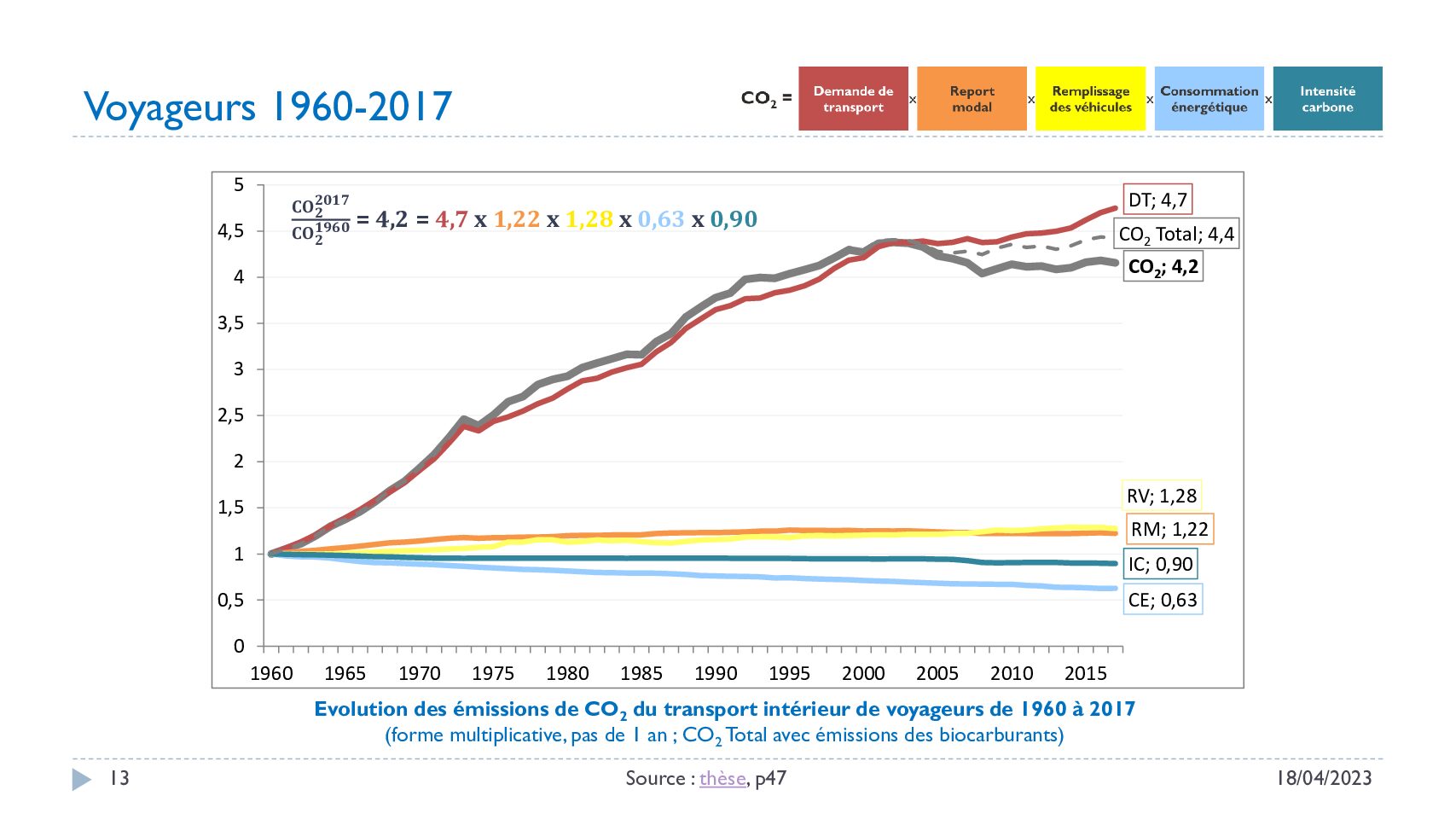
So if we look at the past, the sobriety levers have tended to work in the wrong way and the technology levers in the right, yet they have offset each other over recent years. Another point to mention is that public policies for transport have had quite a limited impact on decarbonising mobility.
FM: What part does electrification play in decarbonising transport?
AB: The low carbon strategy (SNBC) is depending on reducing vehicle energy consumption and the carbon intensity of energy as the two levers for cutting CO2 emissions by 2050. For 2050, the SNBC is based mainly on the energy efficiency of engines until around 2035, then in the second period, on decarbonsing the energy used… so largely on technology levers.
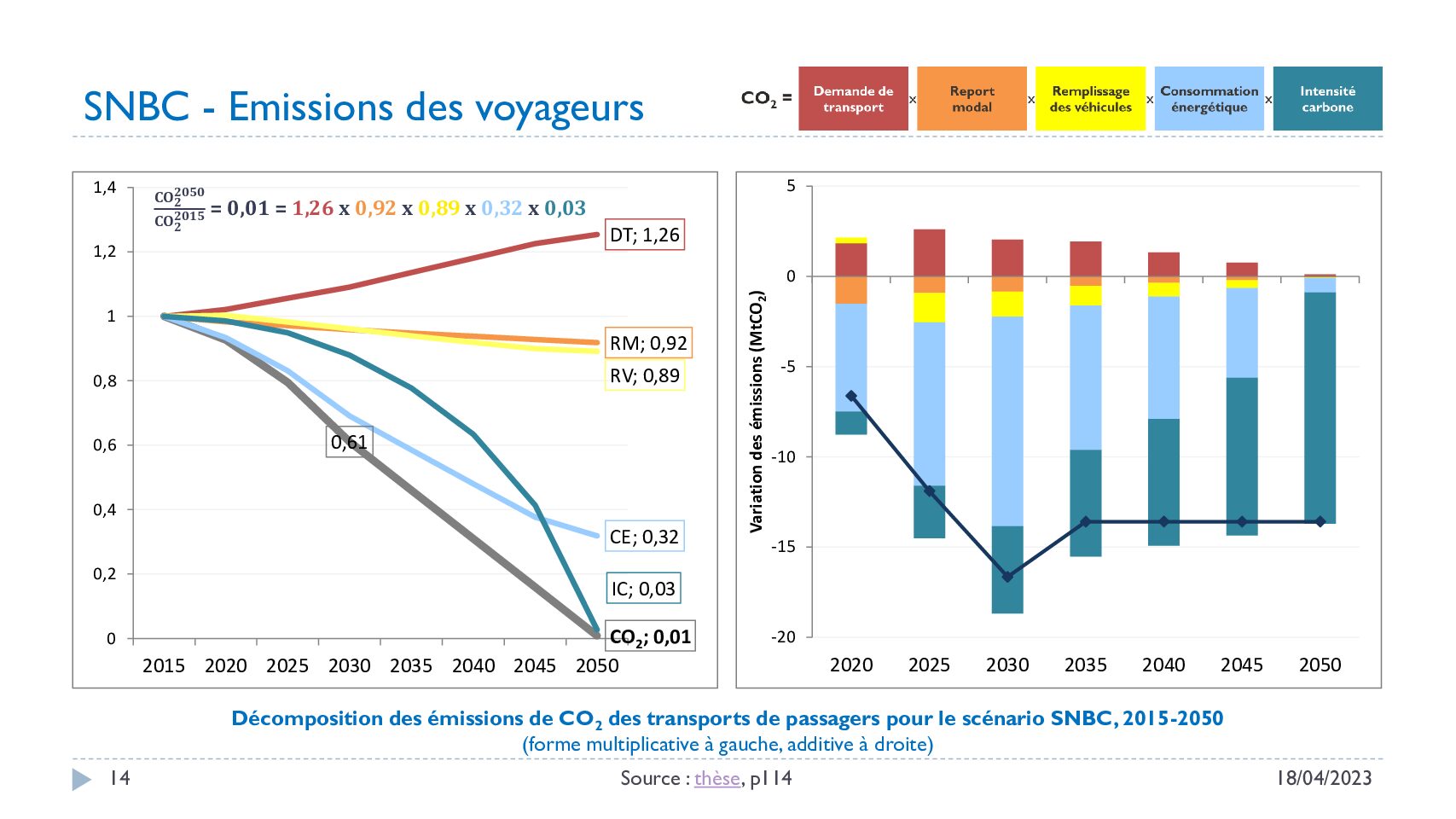
But be beware, according to the SNBC, electric should largely dominate for cars and trains by 2050, but not for the other modes of transport. For light commercial vehicles, half the energy consumed could come from electricity. For heavy goods vehicles, public transport, and road transport, the share of electricity is expected to be lower. For the waterways, sea and air transport, there won’t be much electrification, except for some applications in niche markets.
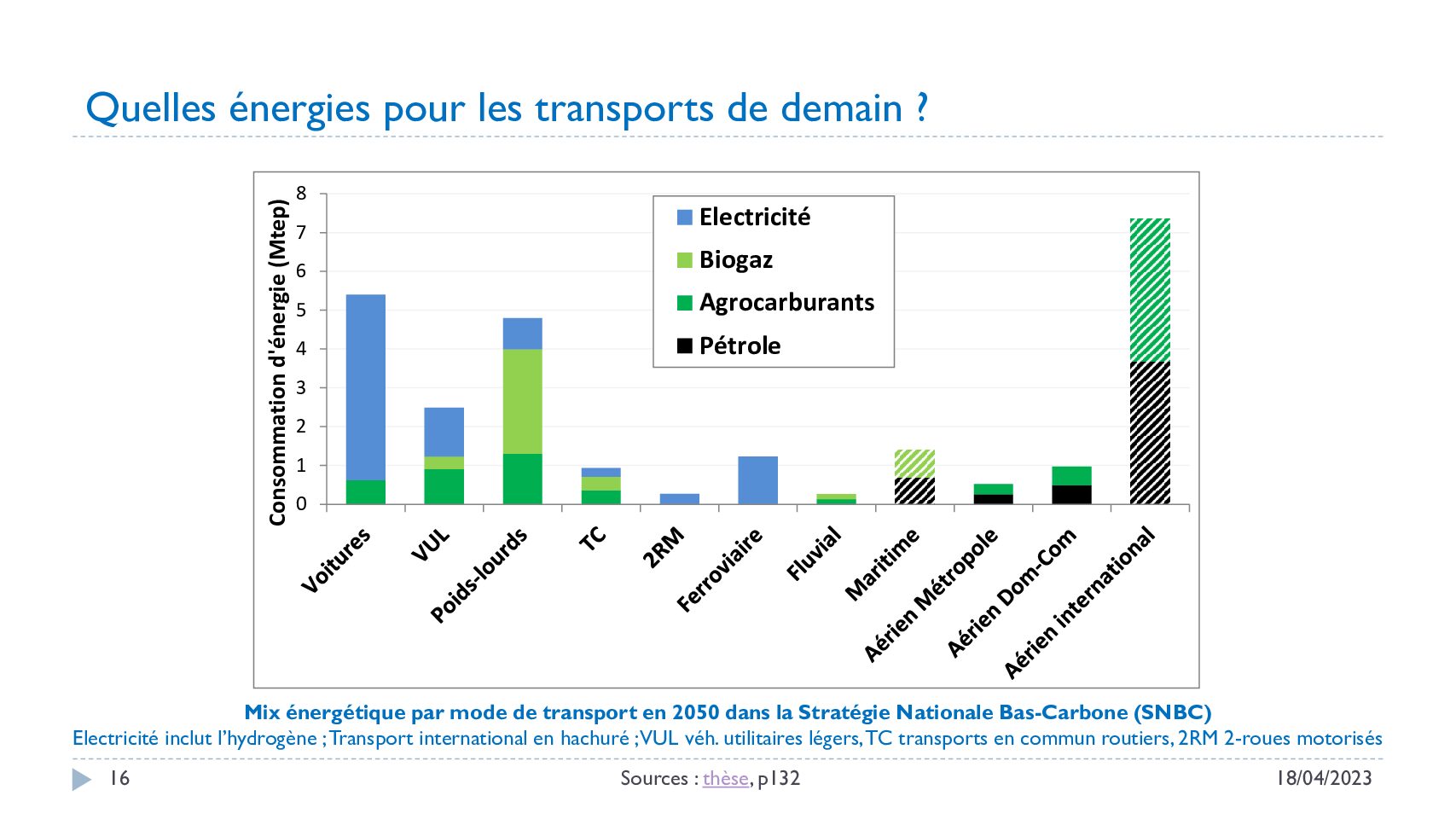
FM: So ultimately, do electric vehicles perform well or badly with regards helping resolve the climate issue?
AB: As far as carbon impact is concerned, if we compare a combustion engine car – a Renault Clio for instance – with an electric – a Renault Zoe – analysing the life cycles shows a two- to five-fold reduction in greenhouse gas emissions. This is a quite a significant decrease, but not enough to reach our climate goals by 2050, because we need to cut emissions even more dramatically. Also, and above all, because it will take a long time to renew the car fleet.
The electric car meets some major environmental challenges (less CO2, noise pollution, and dependence on oil) better than the combustion engine car, yet has no impact on the occupation of public space, accident rates, or physical inactivity. Furthermore, it will instead raise challenges over the consumption of metals and related geopolitical, environmental, and social issues.
Compared to other types of lighter, more fuel-efficient vehicles, the electric car will emit more CO2, consume more energy, and take more mineral resources to be built.
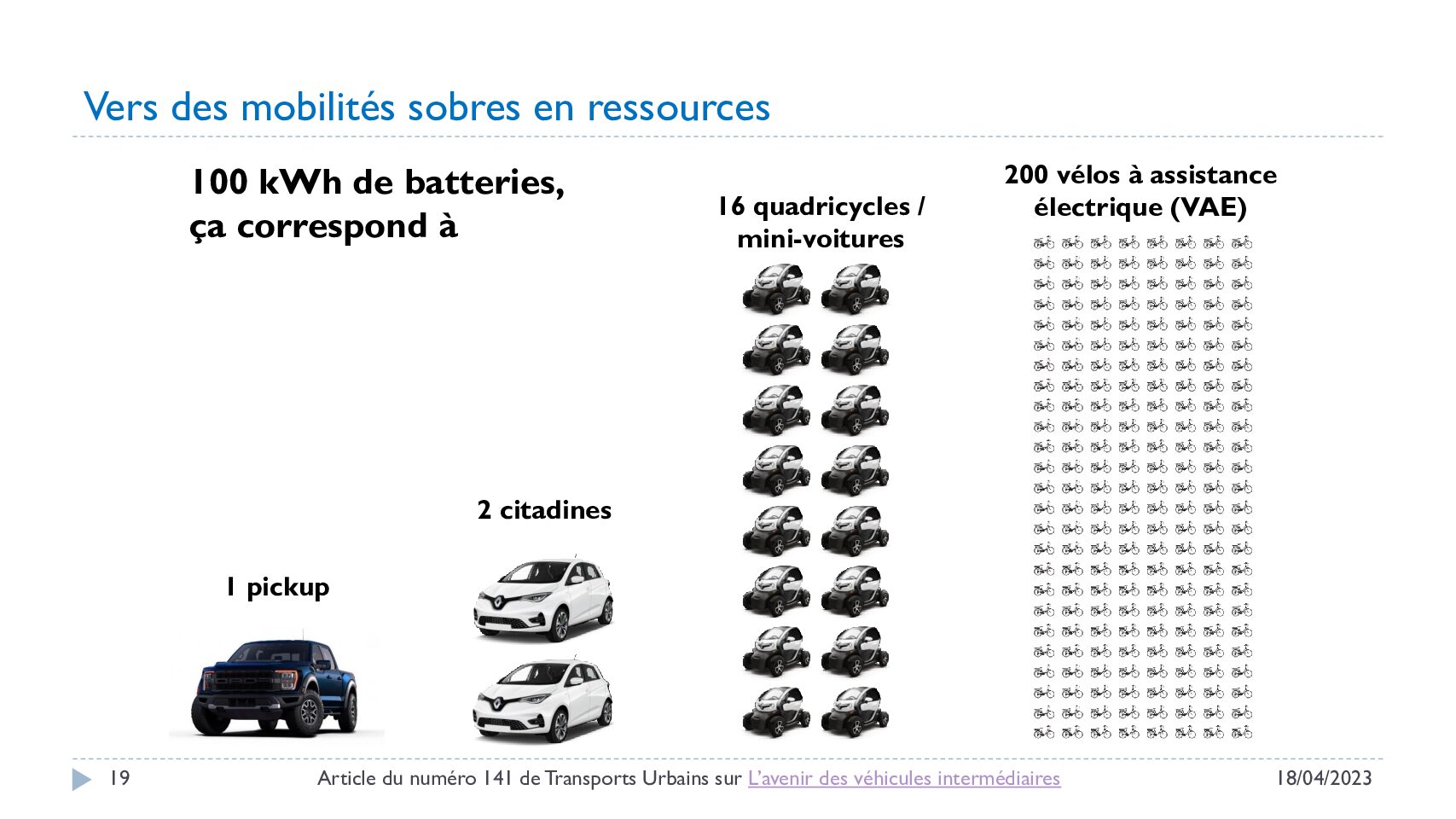
Hence the interest in exploring so-called ‘intermediate’ vehicles that are a cross between the electric bike and electric car.
This sobriety is also important in terms of price, as it means more vehicles can be produced and electric mobility opened up to more people. An electric car weighing around one tonne costs around 20,000 euros to buy. A two-tonne electric car costs around 50,000 euros to buy. So every time we increase the weight of a vehicle by 100kg, the price goes up by 3,000 euros. This is why it is interesting to move towards lighter vehicles to make them price accessible.
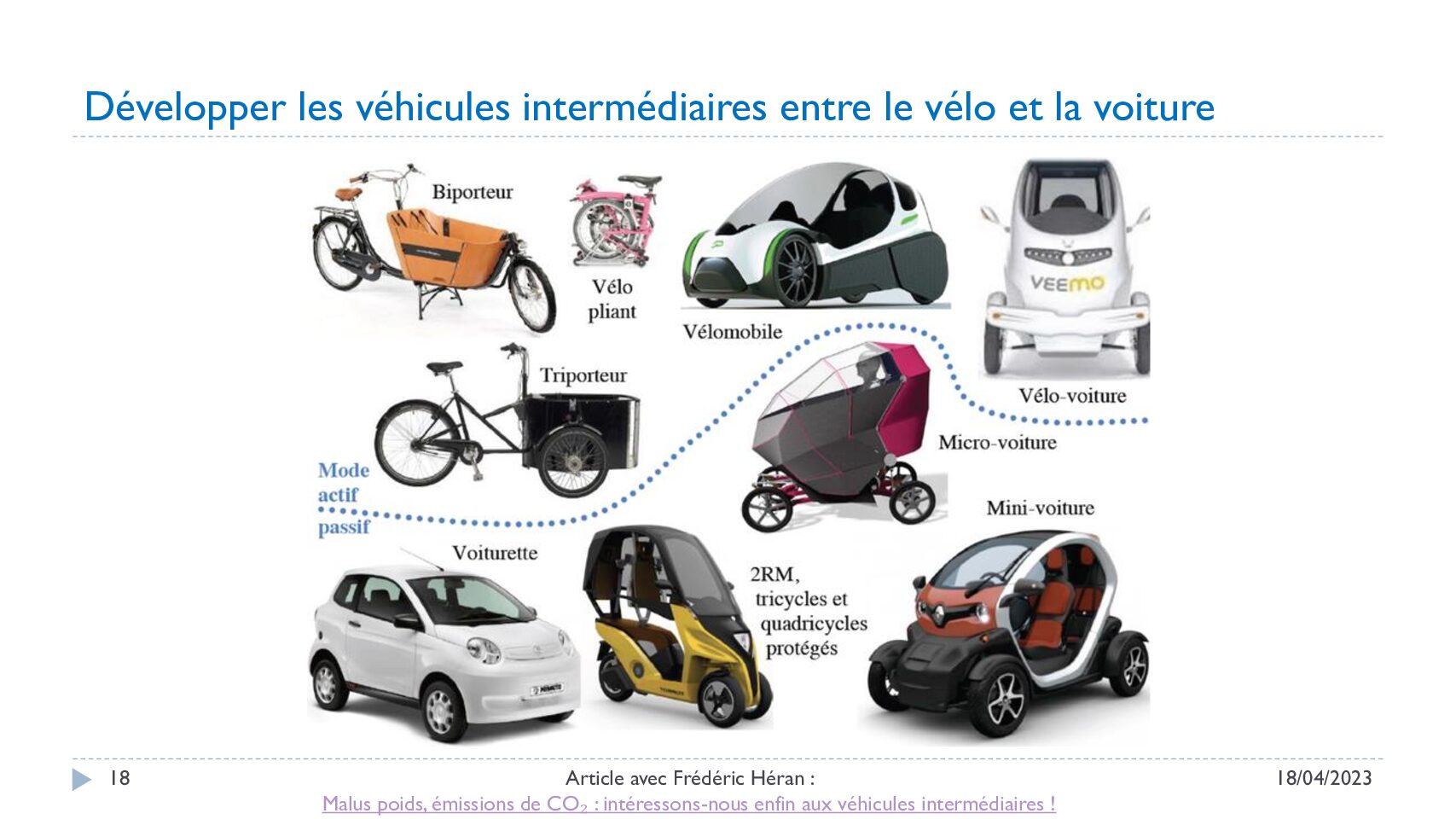
FM: How do you see batteries developing? What can we expect?
AB: As far as tomorrow’s batteries are concerned, there have been some fairly major advances in battery chemistry in recent years, notably a sort of resurgence in lithium-iron-phosphate batteries that don’t use cobalt or nickel – which is far from negligible, even though they have a lower energy density. We are also seeing a shift towards nickel-manganese-cobalt (NMC) batteries, also with a lower cobalt content.
Predicting or anticipating the future of batteries is quite difficult given how fast technologies can evolve, but there is room for manoeuvre for prices and energy density, depending on the preferred chemistry: solid electrolyte batteries, replacing lithium with sodium, etc. This is also sure to develop according to market needs and depending on tensions over metals. The advantage of having different chemistries is that we can adapt to these tensions.
FM: Finally, what paths need to be taken to decarbonise transport?
AB: Electric vehicles will meet a number of challenges. Yet we need to move as much as possible towards more sober mobility. Some of today’s cars could be replaced by intermediate vehicles because the cost efficiency and benefits, like resource efficiency, less occupation of the public space, and encouraging more active daily lifestyles, for instance, are greater.
Other musts are moderating transport demand, working on land use and urban planning…. Difficult questions need to be asked if we want to reach the decarbonisation goal for 2050. We need to take action for all five emission reduction levers and, in any case, avoid the tech solutionism that is all too common today. One thing is for sure, in the short term we can’t achieve this objective of decarbonising land transport in France without sobriety levers.

